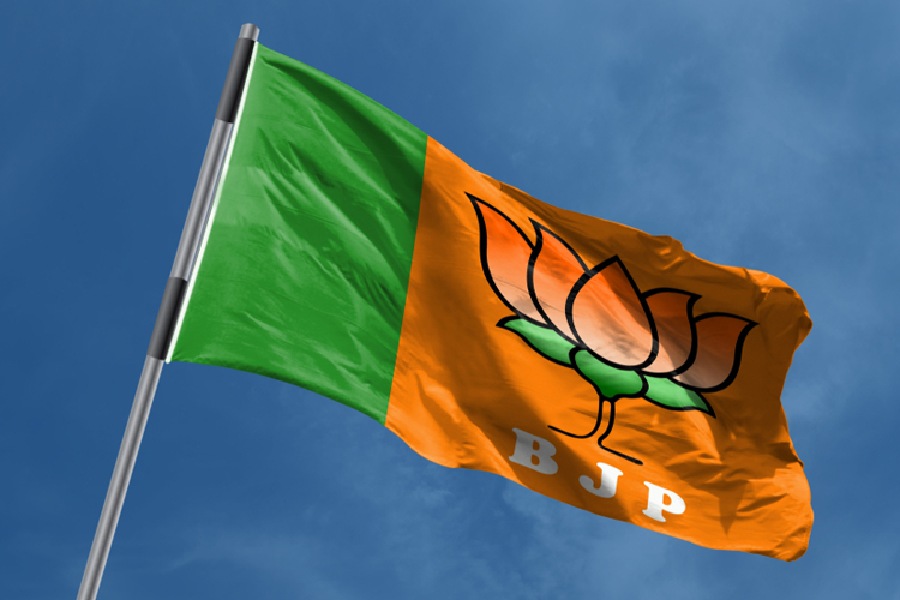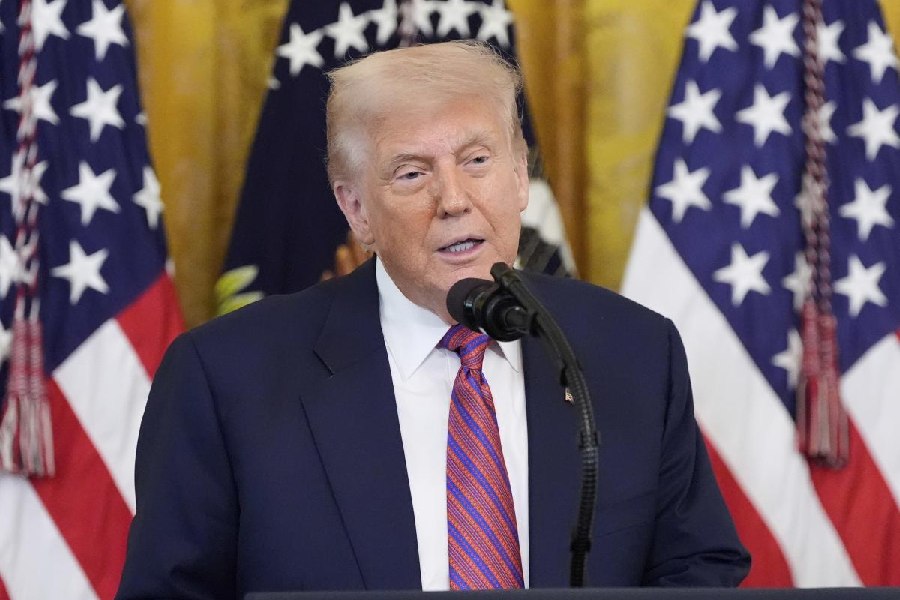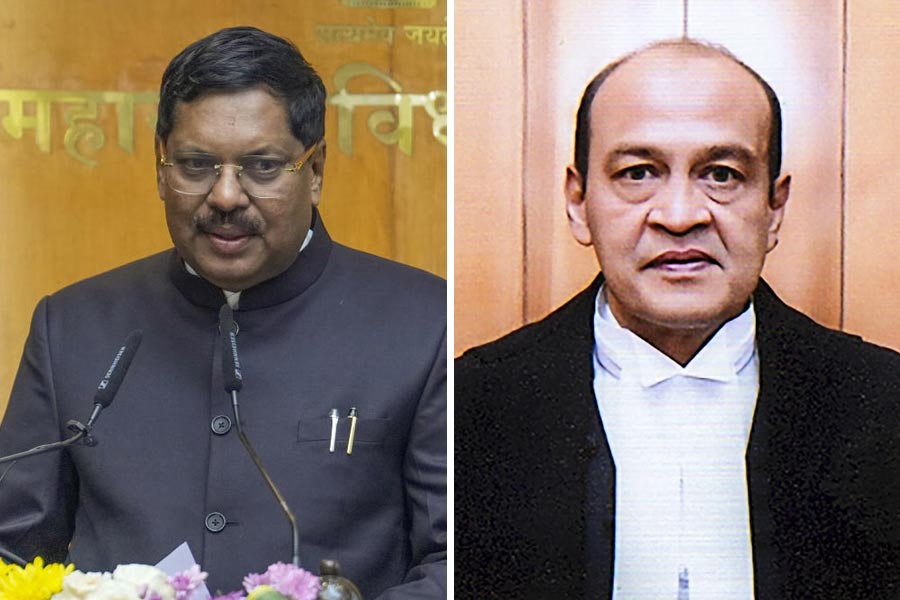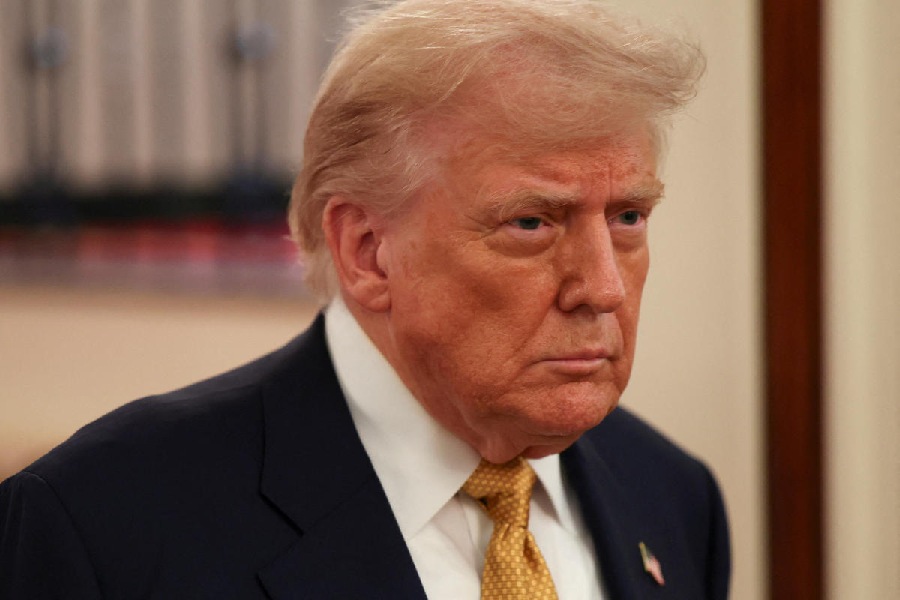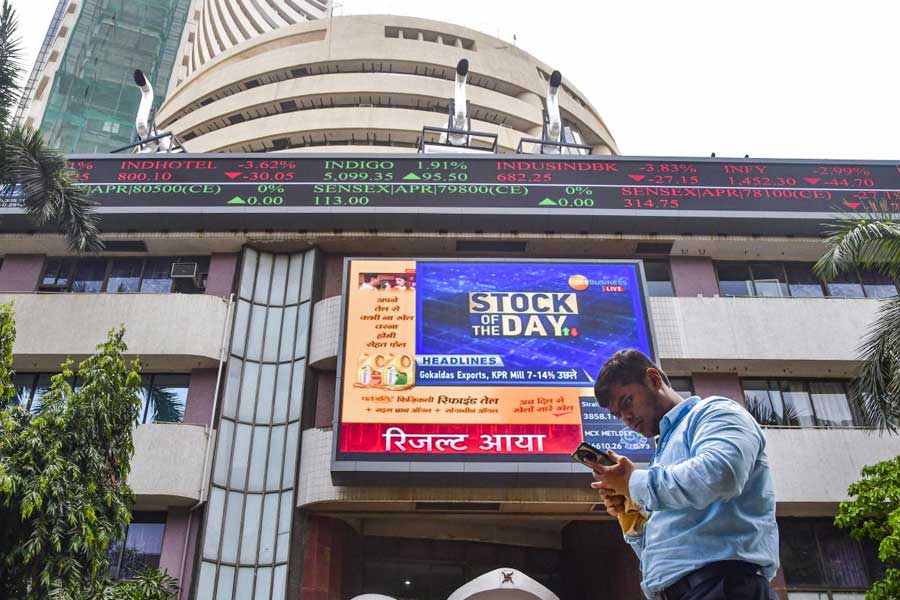|
|
| Politics of mobilization |
Gandhi returned to Indian politics in 1915. While trying to understand his politics, we should bear in mind that he was forty-six years old and had been an NRI for nearly a quarter of a century. He had served his political apprenticeship in South Africa, not as a nationalist, but as a civil rights activist, fighting for civic and racial equality on behalf of South Africa?s Indian community.
When Gandhi arrived, he found a Congress riven by two readings of nationalism. Early Congress nationalism was one particular response to the challenge of organizing politically within the constraints of colonial rule. The strategy the early Congress favoured was pluralism powered by the rhetoric of economic grievance.
This pluralist style had been challenged by an Extremist faction that favoured popular mobilization in the name of a Mother India defined by a Hindu cultural nationalism. The Swadeshi movement was the first fruit of this Extremist style. By 1915, the Moderates were in some disarray, with many of them deserting the Congress to join the Indian Liberal Federation, while the great leader of the Extremists, Bal Gangadhar Tilak, was busy trying to establish a Home Rule League, to press the colonial state to grant Indians self-government.
On the face of it, Tilak should have been Gandhi?s mentor and model. They shared a willingness to deploy a ?Hindu? idiom in political discourse; both wanted to invent a politics that transcended the polite, petitioning politics of the early Congress; both men tried to forge instruments for popular mobilization and pan-Indian agitation. Gandhi even used the Home Rule League networks created by Tilak to give structure to the Non-Cooperation movement. And yet Gandhi steadfastly maintained that his mentor in matters political was not Tilak but his great Moderate contemporary, Gopal Krishna Gokhale.
The fundamental difference between Tilak and Gandhi is this. Tilak wanted to confront the raj on behalf of a nation imagined in a broadly Hindu style. To this end, he was willing to use Shivaji and Ganesh symbolically to raise nationalist consciousness. Gandhi?s political ideas and anti-colonial strategies were designed to extend Congress pluralism to the new epoch of mass politics. Mass politics to Gandhi meant adapting the style of civil disobedience he had learned in South Africa to the vastness of India. This posed two challenges: one, creating a politics that overcame the urban alienation of Congress politics from the rural Indian hinterland. And two, consolidating the representative claims of Congress pluralism by drawing into its politics a substantial Muslim presence.
Gandhi?s homespun make-over, his populist folk-religious idiom, his assertion that he was a sanatani Hindu, obscures an essential difference between him and someone like Tilak. Unlike the Extremists, Gandhi, with one fatal exception, never mobilized around religious symbols or issues. His great mobilizations were centred on issues that were secular in an almost doctrinaire way: the suspension of civil liberties in the case of the Rowlatt satyagraha, the right to make untaxed salt later and a strictly civic micro-politics based on constructive work, sanitation and spinning. Gandhi, in his dhoti-wearing, ashram-centred avatar had learnt more from Tolstoy?s romantic identification with Russian peasant life and its traditions and Henry Thoreau?s Walden than he had from any specifically ?Hindu? tradition.
Looking back, Gandhi?s South African apprenticeship seems a controlled experiment where he implemented and refined ideas of civil disobedience and passive resistance derived from his reading of Henry Thoreau?s essay, ?Resistance to Civil Government?, written in 1849 and posthumously published in 1866 as ?Civil Disobedience?. Similarly, after his arrival in India, Gandhi?s leadership initiatives in Champaran, Ahmedabad and Khera can be seen as five-fingers exercises, undertaken in preparation for the anti-colonial struggle ahead. The agitation he launches against the Rowlatt Bill, the first all-India satyagraha, seems, in retrospect, a dress rehearsal for the premiere of Gandhi?s first truly pan-Indian movement, the Khilafat-Non-Cooperation struggle.
The Khilafat-Non-Cooperation is generally regarded as the Part I of a trilogy, the Civil Disobedience movement and the Quit India movement being Parts II and III. What?s more, it has a special place in the history of Indian nationalism as the high-water mark of Hindu-Muslim cooperation in the course of the anti-colonial struggle. Parts II and III, as Gyanendra Pandey pointed out in a clever book, were notable for the relative meagreness of Muslim participation.
The problem with this perspective and this seductive sequence of roughly decennial agitations, is that the Khilafat-Non-Cooperation movement is a massive aberration in Gandhi?s political career, different from any movement he participated in, before or afterwards. The Khilafat-Non-Cooperation movement is singular because it is the only movement led by Gandhi that was centred on a religious issue: the preservation of the Sultan of Turkey as the Caliph of all Muslims.
We can see its aberrant nature in the uneasy hyphenation of its name: Khilafat-Non-Cooperation. As a schoolboy, I used to think that the Khilafat part had to do with Muslims and the Non-Cooperation part with the Congress, till Francis Robinson, in his fine book, Separatism Amongst Indian Muslims, set us right. Both the agitation to save the Turkish Sultan on account of his claim to be the Muslim world?s Khalifah and the scheme of Non-Cooperation were initiatives of the Khilafat leadership, not Gandhi or the Congress. Gandhi made these two issues his own by presiding over the All India Khilafat Conference in Delhi in November 1919, well before the Congress had anything to do with the Khilafat issue. By September 1920, Gandhi in an extraordinary political coup, had gotten himself elected president of the All-India Home Rule League and steered a resolution in favour of Non-Cooperation to preserve the Khilafat and wrest swaraj in the Congress session in Calcutta.
Gandhi?s decision to choose the Khilafat movement as the occasion for his all-India debut, seems even odder given the Khilafat leadership. Maulana Abdul Bari was a conservative Barelvi alim. The Ali Brothers, Mohammad and Shaukat, were Young Turks from Aligarh, impatient with the loyalism of Sir Syed?s politics and openly admiring of the intransigence of Extremist politics during the Swadeshi movement. In fact the leaders of the Khilafat movement are best understood as the Extremist tendency in Muslim politics. Gandhi, Gokhale?s disciple, had chosen as his allies a pair of populist demagogues: the Lal-Bal-Pal of Muslim politics. The irony of this is sharpened by the fact that the greatest critic of the Khilafat movement and the Congress?s part in it was Jinnah, once Dadabhai Naoroji?s private secretary, and, at the time, the outstanding representative of the Moderate tendency in Muslim politics.
Why did Gandhi do it? For two reasons. One, he saw it as a quick, cheap way of getting the Muslims on board. What Gandhi was doing here was trying to repopulate the Muslim enclosure in the nationalist zoo by manipulating a Muslim version of Tilakite populism. When Gandhi described the Khilafat cause as the ?Muslim cow?, that is, a sacred, sentimental cause, his analogy was off the mark. The Turkish Sultan was for the Ali Brothers what Shivaji was for Tilak: a lonely symbol of defiance in the face of a hostile empire. The Khilafat stirred them in the same way as the idea of Hindu Padpadshahi stirred the Extremist imagination.
Gandhi?s second reason for espousing this curious cause was that it allowed him to take over the Congress. By promising to deliver the Congress, he secured the support of the Khilafatists, and by promising to deliver the Muslims, he effectively took over the Congress without being a member or ever standing for election. In the short term, he succeeded brilliantly. In the long term, this adventurist coup did the anti-colonial movement incalculable damage.
The reason Gandhi?s alliance with the Khilafatists was a form of adventurism was not because he was trying to do a deal with a Muslim party. The Congress had always approached Muslims at one remove, as the Congress-League pact of 1916 so clearly demonstrated. No, the reason the Khilafat movement was aberrant was because the earlier deals had been based on rational political bargaining, whereas agitating for the Sultan was inflammatory posturing in a hopeless cause. That Gandhi acted in patronizing bad faith, is clear from the abruptness with which he called off the movement after the Chauri Chaura violence without even consulting his Muslim allies. If he had ever believed that Khilafat was the Muslim cow, he cut its throat pretty casually.
The passions he had helped rouse, which were now turned against him and the Congress, meant that the Congress haemorrhaged Muslims ever afterwards. Gandhi returned to the secular straight-and-narrow with the salt satyagraha ten years later and strove manfully to secure the Moderate aim of a pluralist nationalism in the age of mass politics, but opportunism of the Khilafat movement haunted the Congress and helped alienate the one constituency it prized above all others: India?s Muslims. In this season of Jinnah, no sensible account of the Khilafat movement can be written without acknowledging that on this issue at least, Jinnah was right and Gandhi, without question, was wrong.



